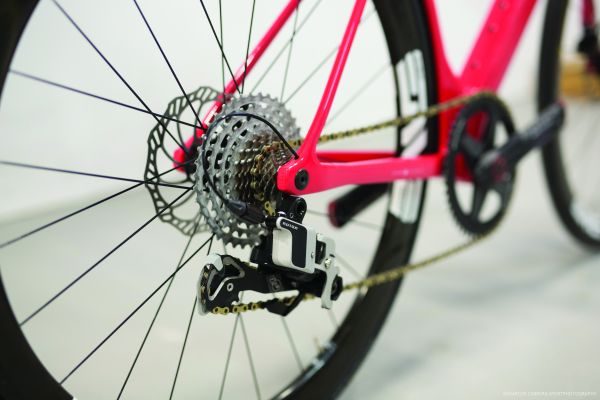Will 13-speed save 1x on the road?
There may still be a place for 1x in the pro peloton


When the Aqua Blue team folded and Adam Blythe angrily blamed the 3T Strada bike, claiming it was “a track bike with gears” saying, “you’re knackered – you can’t ride a one-day race never mind a two-week race,” onlookers assumed that marked the end of the road for 1x road bikes in the professional peloton.
The nail in 1x’s coffin appeared to be the launch of the Strada Due in July, a conventional double-chainring version of the Strada, with the brand’s Gerard Vroomen admitting: “Of course pro riders find themselves in a very specific situation, often going up mountains in a peloton surrounded by 100 riders with no choice but to ride the exact pace of those around them, not their own pace. In such a situation, where they can’t go their own pace, having that extra gear can be an advantage.”
But do you really have to scrap all the advantages of a 1x system, such as weight saving, better aerodynamics, simplicity, easy adjustment and clean lines, to go back to a conventional set-up? What if you just had more sprockets than the 11 that were at Aqua Blue’s disposal with their SRAM Force1 groupsets?
While 3T appeared to be giving up on 1x, or at least hedging its bets, Rotor, one of Dimension Data’s equipment sponsors this year, unveiled a 1x13 groupset at Eurobike. Although it’s still in its launch phase, the Spanish brand is confident that it’s headed for the pro peloton and revealed to Cycling Weekly that it had already been talking to 3T with regard to the 1x Strada bike.
Rotor engineer Carlos Carton, who led the 1x13 project, said: “With Aqua Blue we have seen that 1x11 is not enough. For that range, the steps in between are too big for these guys. But with 1x13 we can extend the range of ratios to match 2x11 and keep the same steps in between.”
Rotor has demonstrated that with a road-racing 2x11 set-up there are actually only 14 different ratios. Its 1x13 can match it pretty much gear for gear. In addition Rotor, which has six years of experience of manufacturing power meters, has data to suggest that slighter bigger steps when riders reach the larger sprockets are inconsequential and so 13 is plenty: “For example in our 1x10-36 we have 10, 11, 12, 13, 14 – the same as what they’re used to using. And then we’re opening a little bit the steps but we have seen with our power meter data that at slow speed the cadence range that you can afford biomechanically is bigger. So these bigger steps at the top of the cassette are biomechanically supported.
“So because of this we think it should not be so hard for it to be accepted by pro cyclists and the pro peloton. But it would hard to change minds when they are looking for victories and they are paid for these wins. So they don’t want to use something new or untested. So you have to break these mental barriers.”
The latest race content, interviews, features, reviews and expert buying guides, direct to your inbox!
My view
Paul McGuinness, global communication manager, Rotor
The confidence is going to be a big part of it. [Road riders] are going to be saying look, this is what I have on my current bike setup, will 1x13 give me the same or better range or better distribution of gears? We are preparing comparison charts that will show people without getting to scientific or too heavy-going that it will, and we have four different cassettes and range of chainrings so that they can match 50/34 and 11-28 or whatever 2x set-up they’re used to.
Obviously Shimano have a huge amount invested in the front derailleur. They don’t want to take away the front derailleur because they want their customers to buy more of them. And they also want to have different groupsets for different disciplines because that’s their business model. As a smaller manufacturer we can be a bit more agile.
Our view
Clearly the sticking point with 1x is the lack of ratios compared to 2x11, but Rotor’s 1x13 system fills in the gaps. Even if it takes the road pros longer to adopt it, 1x13 will be snapped up by everyone else.
Simon Smythe is a hugely experienced cycling tech writer, who has been writing for Cycling Weekly since 2003. Until recently he was our senior tech writer. In his cycling career Simon has mostly focused on time trialling with a national medal, a few open wins and his club's 30-mile record in his palmares. These days he spends most of his time testing road bikes, or on a tandem doing the school run with his younger son.
